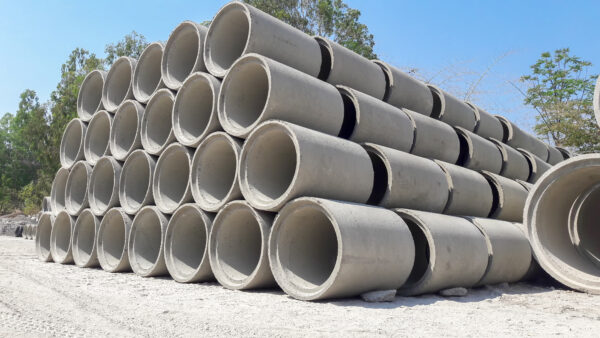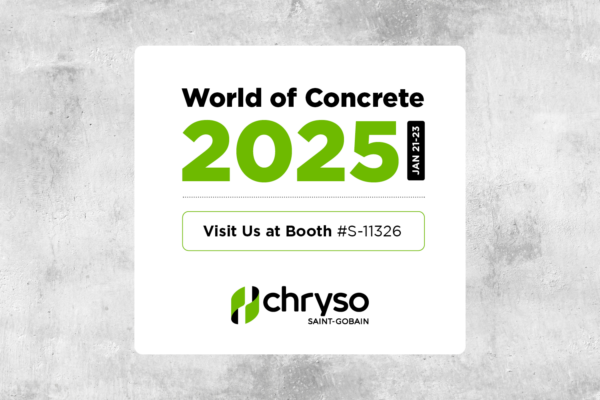Cold Weather Concrete – TB-0106

Concrete placed during cold weather will develop sufficient strength and durability to satisfy intended service requirements only if it is properly produced, placed and protected. ACI 306 “Cold Weather Concreting” defines cold weather concreting as a period when for more than three (3) consecutive days, the following conditions exist:
- The average daily air temperature is less than 5°C (40°F) and,
- The air temperature is not greater than 10°C (50°F) for more than one-half of any 24 hour period.
Even though not defined as cold weather, protection during Spring and Fall is required during the first 24 hours to avoid freezing.
What Happens When Concrete Freezes?
- Pore water in concrete starts to freeze around -1°C (30°F)
- As some water freezes the ion concentration in the unfrozen water goes up, further depressing the freezing point.
- At around -3 to -4°C (25 to 27°F), enough of the pore water will freeze so that hydration will completely stop, and depending on the extent of hydration, and thus the strength of the concrete, the forces generated by the expansion of ice (ice occupies ~9% more volume than water) may be detrimental to the long term integrity of the concrete.
Objectives of Cold Weather Concreting
The objectives of cold weather concreting are to:
- Prevent damage to concrete due to freezing at early ages
- Assure that concrete develops the required strength for the safe removal of forms
- Maintain curing conditions that foster normal strength development without using excessive heat
- Limit rapid temperature changes in the concrete to prevent thermal cracking
- Provide protection consistent with the intended serviceability of the structure
For every 10°C (18°F) reduction in concrete temperature, the times of setting of the concrete double, thus increasing the amount of time that the concrete is vulnerable to damage due to freezing. It should be noted that warm concrete placed on cold sub-grade will lose heat and its temperature will drop. It is important to understand that having the concrete reach the specified 28-day strength is irrelevant if the structure is damaged by inadequate curing and protection.
Concrete that is protected from freezing until it has attained a compressive strength of at least 3.45 Mpa (500 psi) will not be damaged by exposure to a single freezing cycle. Concrete that is protected and properly cured will mature to its potential strength despite subsequent exposure to cold weather.
Except in heated, protective enclosures, little or no external supply of moisture is required for curing during cold weather.
Recommended Practices and Basic Principles for Cold Weather Concrete
- Planning—Prior to the pour, clearly define the cold weather concreting methods that will be used. A pre-placement meeting with the contractor, specifier, producer, laboratory and other interested parties is highly recommended.
- Curing and Protection—Where a specified concrete strength must be attained in a few days or weeks, protection at temperatures above 10°C (50°F) is required.
- Temperature Records—Temperature of the concrete determines the effectiveness of protection, regardless of air temperature. Maintaining temperature records of concrete in place is essential.
- Heated Enclosures—Must be strong enough to be windproof and weatherproof. Combustion heaters must be vented to the outside to prevent carbonation.
- Exposure to Freezing and Thawing—Concrete should be properly air entrained if it will be saturated and exposed to freezing and thawing cycles during construction.
- Slump—All else being equal, lower slump and/or lower water/cement ratio mixes are particularly desirable in cold weather for flatwork. This reduces bleeding and decreases setting time.
- Truck Travel Time—The distance from the plant to the point of placement can have a severe effect on the temperature of concrete.
- Hot Water—While hot water improves setting time of cold weather concrete, after the first few batches of concrete hot water heaters may not be able to maintain hot water temperature. Later in the pour, concrete may be cooler than at the beginning of the pour.
- Temperatures for Placement and Protection in Concrete Weather—ACI 306 provides recommended temperatures for placement and protection of concrete.
Table 1: Recommended Concrete Temperatures1
| Section Size, Minimum Dimension, mm (in.) | |||
|---|---|---|---|
| <300 mm (<12 in.) |
300–900 mm (12–36 in.) |
900–1800 mm (36–72 in.) |
>1800 mm (>72 in.) |
| Section Size, Minimum Dimension, mm (in.) | |||
| 13°C (55°F) | 10°C (50°F) | 7°C (45°F) | 5°C (40°F) |
| Air Temperature | Minimum Concrete Temperature as Mixed for Indicated Air Temperature2 | |||
|---|---|---|---|---|
| Above -1°C (30°F) | 16°C (60°F) | 13°C (55°F) | 10°C (50°F) | 7°C (45°F) |
| -18 to -1°C (10° to 30°F) | 18°C (65°F) | 16°C (60°F) | 13°C (55°F) | 10°C (50°F) |
| Below -18°C (0°F) | 21°C (70°F) | 18°C (65°F) | 16°C (60°F) | 13°C (55°F) |
| Maximum Allowable Gradual Temperature Drop in First 24 Hours After End of Protection | ||||
| 28°C (50°F) | 22°C (40°F) | 17°C (30°F) | 11°C (20°F) | |
1 Taken from Table 3.1 in ACI 306.
2 For colder weather a greater margin in temperature is provided between concrete as mixed and required minimum temperature of fresh concrete in place.
Additional Accelerator Toward the End of the Pour—Adding more accelerating admixture at the end of the pour will offset the effects of cooler mixing water and provide a more consistent set. Another reason to add more accelerating admixture as the pour progresses is to speed up the setting of the latter mixes and have all the concrete in the pour reach set at about the same time in order to facilitate the finishing operation.
Acceleration of Concrete Hydration in Cold Weather
The reduction of setting time and the acceleration of strength gain often result in substantial savings due to shorter protection periods, faster form reuse, earlier removal of shores, and less labor in finishing flatwork.
- Setting time is more important in flatwork finishing
- Early strength gain is more important for early form removal
Acceleration may be encouraged by using:
- Type III Portland cement
- 20% additional Type I or II cement to provide Type III response
- Set-accelerating admixtures such as POLARSET® and DARASET® 400®
Calcium chloride is the most cost effective accelerator available, but it causes corrosion of embedded metals in the presence of oxygen and moisture. This is why limits exist on the use of chlorides in concrete
It is important to verify that non-chloride accelerating admixtures are also noncorrosive. Some accelerating admixtures which are labeled as non-chloride may still contain materials which cause the products to be corrosive to embedded metals. Non-chloride, noncorrosive accelerators are more expensive up-front, but when life-cycle costs and regulations limiting chlorides are considered, they are the most cost effective products.
Accelerators have been introduced successfully into concrete both before and after the addition of cement to the mix, but it may be best policy to add the accelerator to the mix after the cement has been wetted. On rare occasions, when accelerators are added to the mix prior to the batching of “under-sulfated” cements, there may be adverse reactions with the tricalcium aluminate (C3A) in the cement which may result in retardation. Therefore, we recommend that if the accelerator is to be added up-front, before the cement, it should be tested with the intended cement at the intended use temperature, prior to placement.
Different mixes and materials will exhibit different setting times. It should not be assumed that two different Portland cements will set at similar rates. If pozzolans are to be used in the concrete, they should also be included in trial mixes prior to placement.
If used correctly, products such as POLARSET® can be used to add 2°C to 6°C (5°F to 10°F) to the temperature range within which concrete can be used (possibly more). At high enough dosages, concrete can be brought down to temperatures of -7°C (20°F) (depending on materials and mix design) without hydration stopping and without any degradation of long-term strength. In addition, in more massive structures, the heat of hydration can help protect the structure from freezing.





